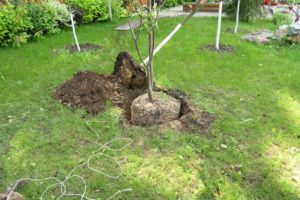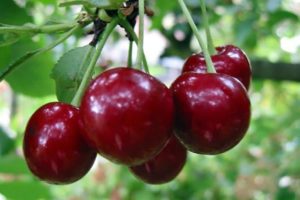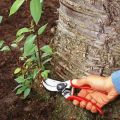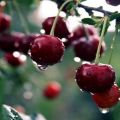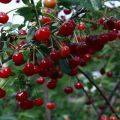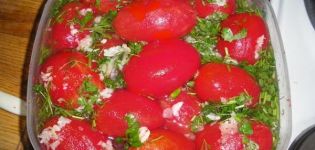Description of the variety and characteristics of fruiting cherries Garland, planting and care
Before buying Garland cherries, study the description of the variety and all its characteristics. Find a good cherry-cherry hybrid quite difficult. But the Garland variety is one of those hybrids that combine the best characteristics of cherry and sweet cherry.
Breeding history
The hybrid was bred by the breeder A. Ya. Voronchikhina. To create a new variety, Krasa Severa and Zhukovskaya ducks were used.
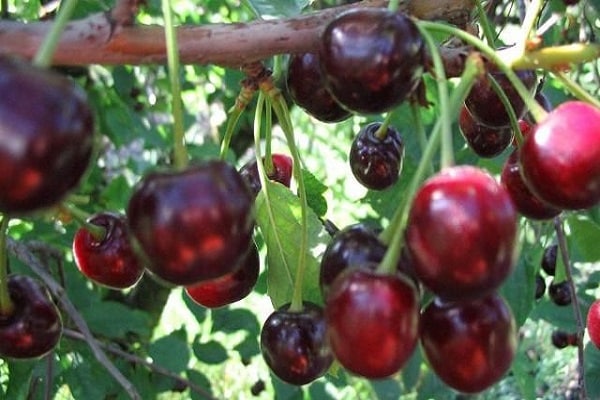
Description
The description of the variety begins with the characteristics of the tree. The plant is not tall, it reaches a height of about 2.5 m. The crown is rounded, thickened by branches is weak. The leaves are large, saturated green, the leaf surface is matte. Leaves are often asymmetrical in shape.
Inflorescences are large, pinkish, collected in bouquets of 3-5 flowers. The diameter of the inflorescence is 3-4 cm. The fruits of the garland are large, on average weight is 6 g. The peel is red-scarlet, the pulp is juicy with a sweet and sour aftertaste. The stone is small, easily separated from the pulp. The tasting score is 4.1 points out of 5.
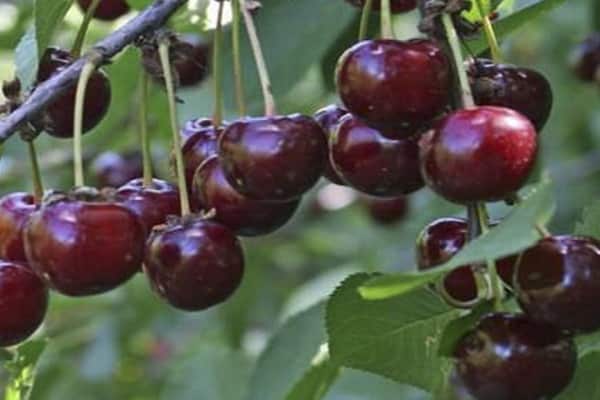
Specifications
Before choosing a cherry tree litter, attention is paid to the plant's resistance to frost and drought, productivity, pollination of inflorescences and disease resistance.
Drought resistance and winter hardiness
The cherry tree does not tolerate drought well. Therefore, overdrying the soil must not be allowed. But the plant tolerates frosts well. The garland can withstand even severe frosts. Shoots begin to freeze if the temperature drops below -30 degrees.
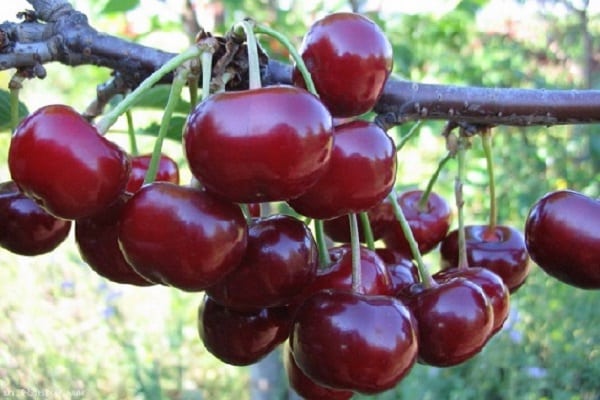
Pollination, flowering and ripening times
The variety is medium early. The first red berries are harvested at the end of June. The Garland is one of the first to bloom in the garden. Many gardeners argue that pollinating trees are not required for the hybrid. But, as a rule, more than one tree grows in the garden in the south, so pollination takes place anyway.
Productivity, fruiting
After planting the seedling, the plant begins to bear fruit in the 3-4th year. The first few years the yield is low, but as the tree grows, the yield increases. A young tree gives up to 7 kg of fruits. Gradually, this figure grows and ranges from 25 kg from a fully formed tree. The maximum yield that is harvested from Garland is 65 kg.
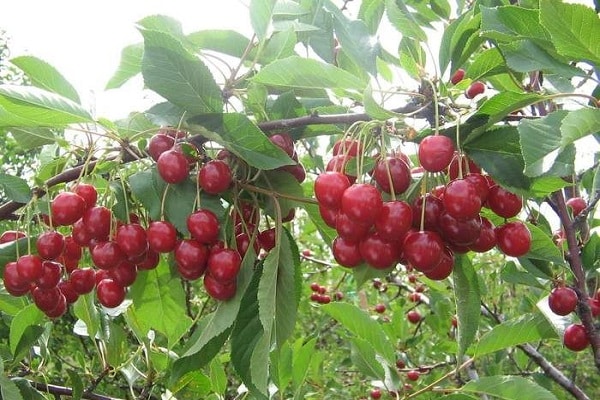
Disease and pest resistance
Cherry resistance to diseases of fruit crops is average. Often the variety suffers from coccomycosis. The exception is monilial burn. The hybrid is immune to this disease.
Advantages and disadvantages of the variety
The advantages include:
- Early fruiting.
- Fruit taste.
- Productivity.
- Immunity to monilial burn.
The disadvantages include the thin peel of the fruit, due to which the berries are characterized by low transportability.

Landing rules
During planting, attention is paid to the choice of location, preparation of seedlings and the planting itself.
Landing dates
Cherries are planted in late April and mid-October.
Seat selection
It is recommended to plant seedlings in open, sunny areas on a hill. Water should not accumulate near the tree in spring.
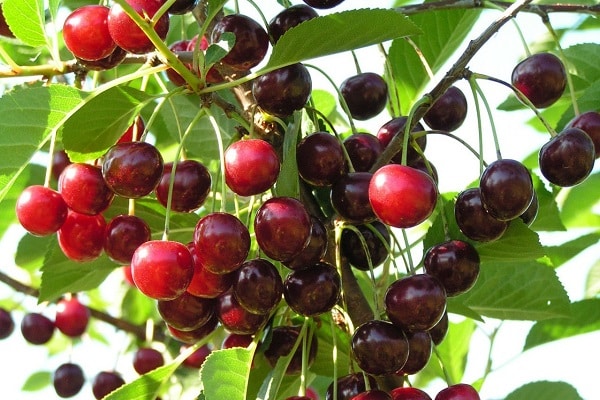
What can be planted next to
It is not recommended to plant raspberries and sea buckthorn next to the Garland. The best neighbors are considered to be other varieties of cherries and cherries, as well as other fruit trees.
Selection and preparation of planting material
For planting, choose healthy seedlings with a strong root system without signs of damage. Before planting, a few hours before planting, the rhizome is dipped in preparations that activate growth. And just before planting, the roots are dipped into an aqueous solution of clay.

Planting stages
Planting stages:
- Dig a hole, sleep at the bottom of the fertilizer (manure, nitrogen and ash).
- Leave the hole for 2-4 weeks.
- Drive a stake into the middle of the pit.
- Put the seedling in the hole, bury it with soil.
- Tamp the earth near the trunk.
- Tie the trunk to the stake.
At the end of planting, pour the hole with plenty of warm water.
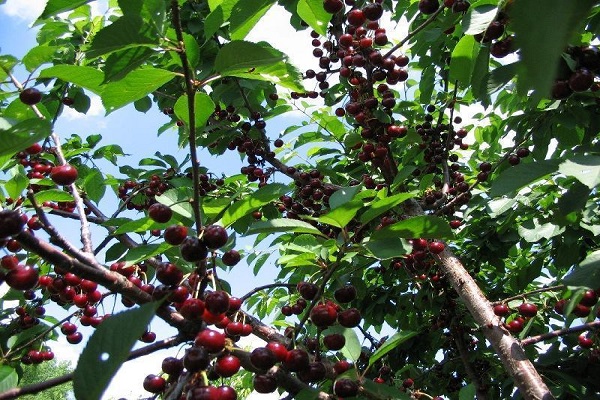
Care
Care includes watering, fertilizing and pruning.
Watering
The hybrid is watered 4 times:
- During the period of kidney formation.
- During flowering.
- Before fruiting.
- Before the onset of cold weather.
Watering is carried out with warm water.
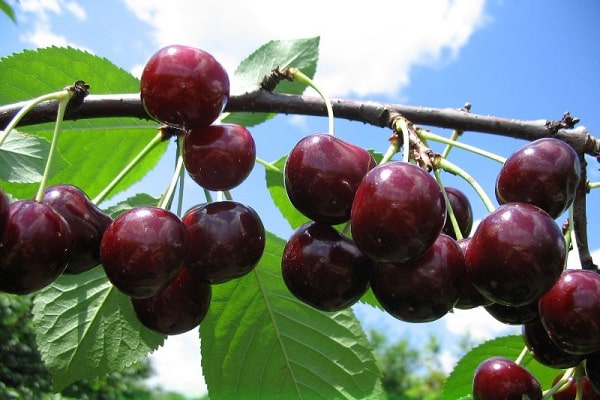
Top dressing
In the first half of the season, nitrogen and organic fertilizing are added to the soil. In the second half of the season, cherries are fed with phosphorus and potassium. From organic matter, manure, compost, peat, mullein and ash are used.
Pruning
Formative pruning is carried out in the spring. Young branches and shoots are cut off. A few skeletal branches are left. In the fall, diseased and dry branches are cut off.
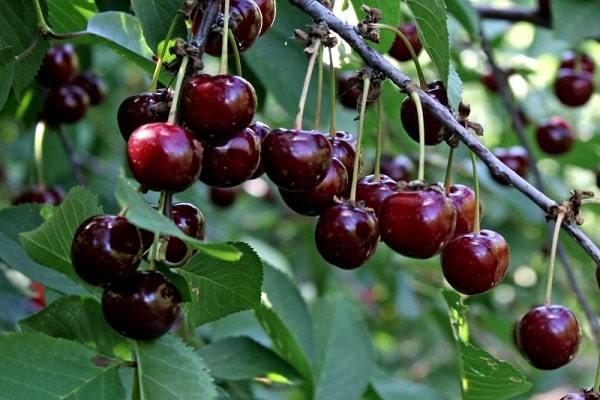
Diseases and pests, methods of control and prevention
As a preventive measure, trees are sprayed with iron sulfate and copper-containing preparations. For pests, plants are treated with "Atkara", "Nitrafen" or any other chemicals from pests of fruit trees. In addition, a solution of laundry soap helps. As a preventive measure, garlic or marigolds are planted next to cherries. The smell of these plants repels insects.

